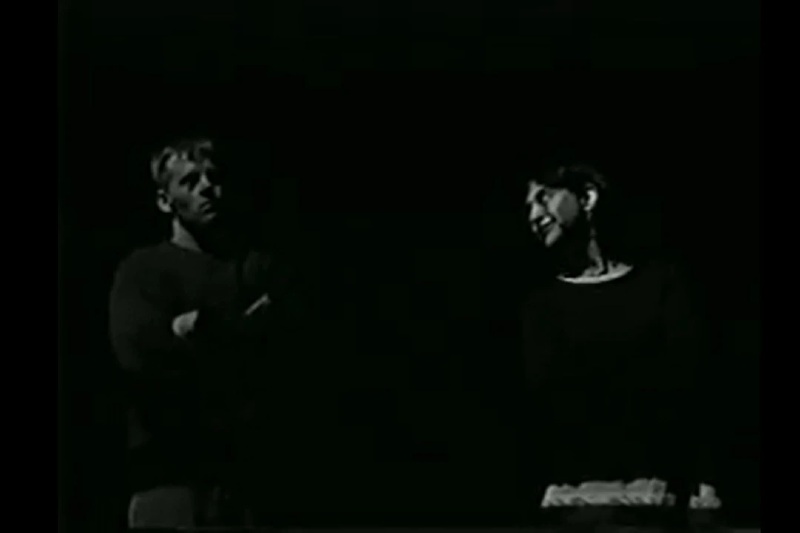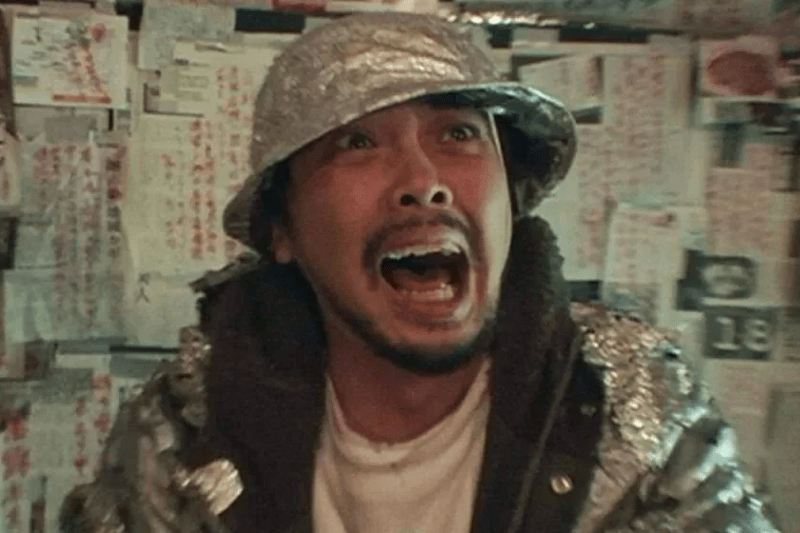Looks like 2022 is the year I keep breaking the mold of Uterus Horror. First, in February, I wrote about a brand-new release, Hellbender. Now, for April, I’m breaking the rules again by discussing a film that isn’t necessarily a horror film but still feels appropriate for this column. That film is none other than Turning Red. But Molly, that’s a Disney Pixar film made for kids! It can’t be Uterus Horror! Trust me when I tell you, it can fit in with this subgenre, and it does.
Turning Red is the feature film debut of director Domee Shi. Shi also co-wrote the screenplay with Julia Cho, who has horror roots as her first writing credit was for three episodes of the hit show Fringe. Turning Red tells the story of 13-year-old Chinese-Canadian Meilin (Rosalie Chiang) who lives in Toronto with her parents. Together, the family operates a temple dedicated to their ancestor, Sun Yee, who is revered for her fierce protection of her family and her love of red pandas.
Meilin is like any typical 13-year-old girl in the year 2002. She has a core group of three best friends, she’s obsessed with the hottest boy band, 4*Town, and she’s just starting to develop crushes on boys. At the same time, Meilin’s life is ruled by her strict parents. Not only do they put a great amount of pressure on her to be the perfect daughter, but their idea of perfection keeps Meilin from spending more time with her friends and doing the things she truly loves.
Everything changes for Meilin the night her mother, Ming (Sandra Oh), discovers Meilin’s drawings of an older boy she has a crush on. Ming takes Meilin to the store where the boy works and makes a scene in front of multiple people, including a boy from Meilin’s school she doesn’t get along with. That night, the combined emotions of lusting after her crush, the humiliation her mother caused, and her desperation to be the perfect daughter causes Meilin to dream of red pandas. When she wakes the next morning, she stumbles into the bathroom to discover she’s transformed into a roughly 7-foot tall red panda.
The immediate implication is that Meilin’s bizarre transformation is representative of her going through puberty. The fact that she turns into a red panda seems significant to that fact, as well as how Meilin now has hair she never had before, and her moods fluctuate more than ever. Even her normally black hair turns a fiery red. Before Ming realizes what’s going on, she believes the sounds of Meilin’s panic indicate she has gotten her first period. She even offers her daughter all the necessary remedies such as snacks, a hot water bottle, and pads.
It quickly becomes apparent that Meilin’s transformations into the red panda are directly linked to her mood. Any emotion that can give her an elevated heart rate — such as anger, embarrassment, stress, or teenage passion — triggers her transformation. Meilin does her best to hide these changes and keep her mood level enough to go to school, much like any kid experiencing the physical and emotional changes of adolescence. Yet every person who has gone through puberty knows school is one of the worst places for a budding teenager to go to avoid heightened emotions.
When Ming discovers what is really happening to Meilin, she must confess to her daughter that she knew the transformation would eventually occur. It is something that happens to all women in Meilin’s family going back as far as their revered ancestor, Sun Yee. Meilin is clearly upset her parents never told her this would happen, which seems to be another nod to a girl’s first period — since many parents never have “the talk” before it happens. Ming also explains that, even though having the red panda powers were important for their ancestors, it is more of a curse in the modern age. Now, all the women in their family go through a ritual during the Red Moon to lock their red panda spirit in a trinket to wear, allowing them to live normal lives without having to worry about a sudden red panda outburst.
Since there is a month before the next Red Moon, the rest of Turning Red shows Meilin as she struggles to come to terms with who she is. For the most part, she can live her life normally with a little help from her friends. Thinking of and being around her three best friends gives Meilin such a feeling of calm and euphoria, that she is able to only transform into the red panda when she wants to. She also chooses to turn into the red panda quite often as her friends embrace the new Meilin, and they are able to commodify the giant fluffy cuteness of the red panda to raise money for 4*Town tickets.
Unfortunately, this also leads to a great divide between Meilin and her family. While they want Meilin to be reserved, obedient, and red panda free, Meilin realizes that isn’t who she is or who she wants to be. Meilin chooses to keep her red panda spirit, which forces Ming’s red panda to break free in an emotional rage. While Meilin’s red panda is quite formidable, Ming’s red panda is a giant, kaiju-sized monstrosity that is pure rage. There is some major destruction of property in the final act, as well as other family members unleashing their panda spirits to save Ming, but all ends well. Ming and the other women in the family contain their red panda spirits again, while Meilin is allowed to live her life on her own terms, red panda and all, and her family fully accepts her.
When Turning Red first came out, many horror fans quickly made comparisons to Ginger Snaps. While both do involve a girl getting her first period while also turning into a monstrous beast, I believe Turning Red is much more similar to When Animals Dream. In both films, the protagonists’ families not only hide the inevitable fact of their transformation, but both films also feature mothers who went through the same transformations their daughters now experience. What’s more, in both Turning Red and When Animals Dream, the families try to stop the protagonists from changing, one with a ritual and the other with drugs.
Yet what might be the most important comparison between the two films is how the main characters find enough strength within themselves to not only go against their families’ wishes, but also choose to embrace the new versions of themselves. In each case, the girls do so with the help of people who love them unconditionally, as they are. For Marie in When Animals Dream, she finds that in a man she loves who adores her back. For Meilin in Turning Red, that love and strength comes from her best friends. The biggest difference between these two is that Meilin’s family eventually also accepts her, it just takes them a bit of getting used to.
One could describe Turning Red as a gateway film to Uterus Horror. The film tackles puberty — a common theme in Uterus Horror films — as we watch Meilin get her first crushes, experience body transformations, suffer from heightened emotions, and rebel against her role as the perfect daughter. Turning Red also incorporates quite a bit of horror. Meilin is essentially a were-red panda, as well as the other women in her family, and Ming is a kaiju-sized were-red panda. Even though red pandas are cute, Meilin and her family members can clearly be dangerous if provoked enough. As with When Animals Dream, Turning Red provides a great message of embracing who you are, whether that be a werewolf or a red panda. Turning Red is a wonderful entry-level Uterus Horror film to ease younger audiences into the subgenre.
About this series: in a genre typically considered “for the guys,” it’s time to give a nod to the ladies. Uterus Horror is a subgenre of horror films that focuses on the uniquely female experience of puberty and the act of coming into your sexuality, using horror elements to emphasize and/or act as a metaphor for that experience. These films are often ignored in theaters but quickly develop cult followings. Columnist Molly Henery, who named and defined the subgenre, tackles a new film each month and analyzes how it fits into this bloody new corner of horror.







